Title search results
Showing 1492861 - 1492880 of 1497591 items
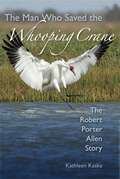
The Man Who Saved the Whooping Crane: The Robert Porter Allen Story
By Kathleen Kaska. 2012
Millions of people know a little bit about efforts to save the whooping crane, thanks to the movie Fly Away…
Home and annual news stories about ultralight planes leading migratory flocks. But few realize that in the spring of 1941, the population of these magnificent birds--pure white with black wingtips, standing five feet tall with a seven-foot wingspan--had reached an all-time low of fifteen. Written off as a species destined for extinction, the whooping crane has made a slow but unbelievable comeback over the last seven decades.This recovery would have been impossible if not for the efforts of Robert Porter Allen, an ornithologist with the National Audubon Society, whose courageous eight-year crusade to find the only remaining whooping crane nesting site in North America garnered nationwide media coverage. His search and his impassioned lectures about overdevelopment, habitat loss, and unregulated hunting triggered a media blitz that had thousands of citizens on the lookout for the birds during their migratory trips.Allen's tireless efforts changed the course of U.S. environmental history and helped lead to the passage of the Endangered Species Act in 1973. Though few people remember him today, his life reads like an Indiana Jones story, full of danger and adventure, failure and success. His amazing story deserves to be told.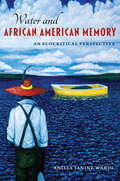
Water and African American Memory: An Ecocritical Perspective
By Anissa J. Wardi. 2011
While there is no lack of scholarship on the trans-Atlantic voyage and the Middle Passage as tropes in African diasporic…
writing, to date there has not been a comprehensive analysis of bodies of water in African American literature and culture.In Water and African American Memory, Anissa Wardi offers the first sustained treatise on watercourses in the African American expressive tradition. Her holistic approach especially highlights the ways that water acts not only as a metaphorical site of trauma, memory, and healing but also as a material site.Using the trans-Atlantic voyage as a starting point and ending with a discussion of Hurricane Katrina, this pioneering ecocritical study delves deeply into the environmental dimension of African American writing. Beyond proposing a new theoretical map for conceptualizing the African Diaspora, Wardi offers a series of engaging and original close readings of major literary, filmic, and blues texts, including the works of Toni Morrison, Ntozake Shange, Julie Dash, Henry Dumas, and Kasi Lemmons.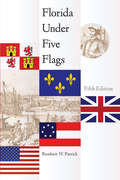
Florida Under Five Flags
By Rembert W. Patrick. 2023
First published in 1945, this concise history of Florida commemorated the state's centennial anniversary and was the very first book…
issued by what was then called the University of Florida Press. Reissued numerous times, its status as a seminal text in our state's history has never been questioned. Even today, copies are difficult to find. As part of the state-wide celebration of the five hundredth anniversary of the discovery of "La Florida," we are pleased to reissue this facsimile edition of one of the most cherished books ever published by the University Press of Florida.In this highly readable account, Rembert Patrick, the first of many giants among Florida historians, summarizes Florida's history under the flags of Spain, France, Great Britain, the Confederacy, and the United States. Distilling five centuries of history, Patrick chronicles Florida's evolving identity: from discovery and settlement to its role under the changing fortunes of European powers, from establishment as a territory to an antebellum state, from the Civil War and Reconstruction to an urban, post-World War II economic juggernaut.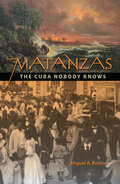
Matanzas: The Cuba Nobody Knows
By Miguel A. Bretos. 2010
Matanzas--the name means literally "slaughters"--is the Cuban city nearest the United States. Known at the heyday of the nineteenth-century sugar…
boom as the "Athens of Cuba," it is renowned for its art, its music, and its rich African heritage. It is also the place where Latin American baseball began. Yet most Americans have never heard of it.Miguel Bretos's fascinating history of his hometown remedies this oversight. Though he came to the United States as a Pedro Pan child and has lived all over the world, his family is still closely tied to the city where they lived for generations. After forty years he returned to his homeland "with the longing of an exile, the anticipation of a child, the curiosity of a visitor, the resentment of a victim, and--hopefully--the objectivity of a scholar."Bretos unfolds the Matanzas story from the aboriginal Tainos to the coming of revolution with solid research, wit, clarity, and the kind of vivid detail that can come only from an insider. But he also deftly inserts Matanzas into a larger picture. More than local history, this original work is Cuban history from a local perspective.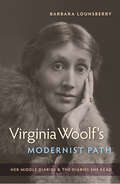
Virginia Woolf's Modernist Path: Her Middle Diaries and the Diaries She Read
By Barbara Lounsberry. 2016
Choice Outstanding Academic Title In this second volume of her acclaimed study of Virginia Woolf 's diaries, Barbara Lounsberry traces…
the English writer's life through the thirteen diaries she kept from 1918 to 1929--what is often considered Woolf’s modernist "golden age." During these interwar years, Woolf penned many of her most famous works, including Mrs. Dalloway, To the Lighthouse, Orlando, and A Room of One's Own. Lounsberry shows how Woolf's writing at this time was influenced by other diarists--Anton Chekhov, Katherine Mansfield, Jonathan Swift, and Stendhal among them--and how she continued to use her diaries as a way to experiment with form and as a practice ground for her evolving modernist style.Through close readings of Woolf 's journaling style and an examination of the diaries she read, Lounsberry tracks Woolf 's development as a writer and unearths new connections between her professional writing, personal writing, and the diaries she was reading at the time. Virginia Woolf's Modernist Path offers a new approach to Woolf 's biography: her life as she marked it in her diary from ages 36 to 46.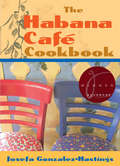
The Habana Café Cookbook
By Josefa Gonzalez-Hastings. 2004
Culinary wizard and cafe owner Josefa Gonzalez-Hastings offers this extravagance of Cuban cooking as a celebration of her heritage. Many…
of the recipes were passed down to her from her mother and aunts; others are "nuevo Latino cuisine"--a fusion of traditional Cuban foods with modern dishes. Cuban food and preparation always has been varied, she says, flavored by the ancestry of the island, with contributions from Spanish conquistadors, African slaves, Asian laborers, and Indian natives.Of course, she also includes Habana Cafe's standard sides of rice, black beans, and glazed golden-brown plantains. Customer favorites are all represented here in easy-to-follow recipes and colorful photographs--from appetizers and soups, seafood and vegetarian entrees, to classics (Cuban sandwiches and flan) and beverages (mojitos, sangria, cafe con leche, Cuba libre). Gonzalez-Hastings also provides a glossary explaining typical ethnic Cuban ingredients such as bijol, a condiment used to give rice a yellow color; naranja agria, the tart Seville orange often used to marinate meat and make mojo sauce; and malanga, a mild, nutty root that flavors soups and other sauces."In my Cuban family," she writes, "two things were always certain-- food and good times." Gonzalez-Hastings shares family stories and photographs of life in pre-Castro Cuba, re-creating the days when Havana was a dining mecca, Ernest Hemingway frequented La Floridita restaurant, and the island gave birth to the daiquiri.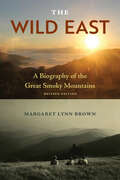
The Wild East: A Biography of the Great Smoky Mountains
By Margaret Lynn Brown. 2000
The classic environmental history of the Great Smoky Mountains, updated with a view from the twenty-first century The Wild East explores…
the social, political, and environmental changes in the Great Smoky Mountains during the nineteenth and twentieth centuries. Although this national park is most often portrayed as a triumph of wilderness preservation, Margaret Lynn Brown concludes that the largest forested region in the eastern United States is actually a re-created wilderness—a product of restoration and even manipulation of the land. Several hundred years before white settlement, Cherokees farmed and hunted this land. Between 1910 and 1920, corporate lumbermen built railroads into the region’s most remote watersheds and removed more than 60 percent of the old-growth forest. Despite this level of human impact, those who promoted the establishment of a national park in 1934 represented the land as an untouched wilderness and described the people living there as pioneers. Toward the end of the twentieth century, Brown writes, the Smokies faced the consequences of decades of management decisions that fluctuated between promoting human tourism and ensuring environmental preservation. Nearly 25 years after the book’s first publication, this revised edition discusses current research, citizen science initiatives, and land management practices that are restoring native plants and wildlife populations in the twenty-first century. Margaret Lynn Brown emphasizes the extraordinary treasure that is the Great Smoky Mountains and the importance of continuing to invest in the park’s protection for years to come.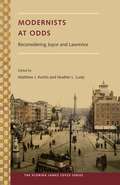
Modernists at Odds: Reconsidering Joyce and Lawrence (The Florida James Joyce Series)
By Matthew J. Kochis, Heather L. Lusty. 2015
"Challenges the unhelpful polarization of Lawrence and Joyce in much twentieth-century literary criticism and offers intriguing alternatives to what is…
surely a reductive approach to the achievements of both writers."—Fiona Becket, author of The Complete Critical Guide to D. H. Lawrence"A groundbreaking collection. Sexuality, censorship, publishing, and rivalry are all treated with a fresh eye; cutting-edge archival research is brought to the fore; and new perspectives such as ecocriticism are among the many highlights."—Susan Mooney, author of The Artistic Censoring of SexualityModernism’s most contentious rivals, James Joyce and D. H. Lawrence, were polar opposites—stylistically, personally, and professionally—yet their lives, works, and careers bear striking similarities. They shared the same literary agent, published in the same literary magazines, fought legal battles against censorship, and were both pirated by Samuel Roth. This is the first book to explore the resonances between the two writers, shattering the historical silence between Joyceans and Lawrentians.The parallels run deep between these epic figures of the literary canon, and this volume explores the classic modernist paradoxes shared by the two writers. Both were at once syncretists and shatterers, bourgeois cosmopolitans, prudish libertines, displaced nostalgists, and rebels against their native lands. Considering mutual themes such as gender, class, horseracing, nature, religion, exile, and modernism’s fascination with Egyptology, these essays highlight the many intersections in the major novels and short fiction of Joyce and Lawrence. Modernists at Odds is a long overdue extended comparison of two of the most compelling writers of the twentieth century.A volume in the Florida James Joyce Series, edited by Sebastian D. G. Knowles Contributors Enda Duffy | Earl G. Ingersoll | Louise Kane | Matthew J. Kochis | Eleni Loukopoulou | Heather L. Lusty | Carl F. Miller | Jennifer Mitchell | Margot Norris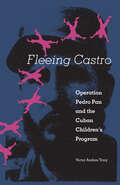
Fleeing Castro: Operation Pedro Pan and the Cuban Children's Program
By Victor Andres Triay. 1998
"The first complete and comprehensive work on these important, unique programs. . . . An interesting, humane, yet tragic component…
of the post-1959 Cuban experience and the Cold War in general."--Antonio Benitez-Rojo, Amherst College "The ordeal began [for the children] when their parents told them they had to travel alone and that they had to keep the upcoming trip a secret. The most powerful parts of the book are their accounts. . . . Through interviews with many of the participants—the children and their parents, the coordinators of the airlift, those in the underground in Cuba and the Catholic sponsors in the United States—Triay attempts to answer many of the questions the exodus raised."--Miami Herald A stirring account of the covert effort to smuggle Cuban children into the United States in the aftermath of Fidel Castro's rise to power, Fleeing Castro brings to light the humanitarian program designed to care for the children once they arrived and the hardship and suffering endured by the families who took part in Operation Pedro Pan. From late 1960 until the October 1962 missile crisis, 14,048 unaccompanied Cuban children left their homeland, the small island suddenly at the center of the Cold War struggle. Their parents, unable to obtain visas to leave Cuba, believed a short separation would be preferable to subjecting their offspring to Castro's totalitarian Marxist state. For the children, the exodus began a prolonged and tragic ordeal--some didn’t see their parents again for years; a few never did. Until now, this chapter of the Cuban Revolution has been relatively obscure. Initially the result of an effort by James Baker, headmaster of an American school in Cuba who worked closely with the anti-Castro underground, Pedro Pan quickly came to involve the Catholic Church in Miami and, in particular, Father Bryan Walsh, who established the Cuban Children's Program, the nationwide organization that cared for those children without relatives or friends in the United States--almost half of them. The latter program, in effect until 1981, was the first to allot federal money to private agencies for child care, an action with far-reaching repercussions for U.S. social policy. Victor Andres Triay traces this story from its political and social origins in Cuba, setting it in the context of the Cold War and describing the roles of the organizations involved in Cuba and in the United States. Making use of extensive interviews with Baker, Walsh, and influential underground figures, as well as personal letters that document the fears and dreams of both the parents and the children, Triay presents this history of Pedro Pan--the largest child refugee movement ever in the Western Hemisphere--with the drama of an international thriller and the pathos of a heartbreaking family drama.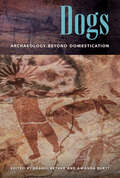
Dogs: Archaeology beyond Domestication
By Brandi Bethke, Amanda Burtt. 2020
This volume offers a rich archaeological portrait of the human-canine connection. Contributors investigate the ways people have viewed and valued…
dogs in different cultures around the world and across the ages. Case studies from North and South America, the Arctic, Australia, and Eurasia present evidence for dogs in roles including pets, guards, hunters, and herders. In these chapters, faunal analysis from the Ancient Near East suggests that dogs contributed to public health by scavenging garbage, and remains from a Roman temple indicate that dogs were offered as sacrifices in purification rites. Essays also chronicle the complex partnership between Aboriginal peoples and the dingo and describe how the hunting abilities of dogs made them valuable assets for Indigenous groups in the Amazon rainforest. The volume draws on multidisciplinary methods that include zooarchaeological analysis; scientific techniques such as dental microwear, isotopic, and DNA analyses; and the integration of history, ethnography, multispecies scholarship, and traditional cultural knowledge to provide an in-depth account of dogs’ lives. Showing that dogs have been a critical ally for humankind through cooperation and companionship over thousands of years, this volume broadens discussions about how relationships between people and animals have shaped our world. Contributors: Brandi Bethke | Kate Britton | Amanda Burtt | Larisa R.G. DeSantis | Melanie Fillios | Emily Lena Jones | Loukas Koungoulos | Robert Losey | Edouard Masson-Maclean | Ellen McManus-Fry | Victoria Monagle | Victoria Moses | Angela R. Perri | Nerissa Russell | Peter W. Stahl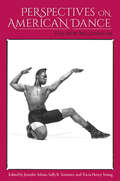
Perspectives on American Dance: The New Millennium
By Jennifer Atkins, Sally R. Sommer, and Tricia Henry Young. 2018
Dancing embodies cultural history and beliefs, and each dance carries with it features of the place where it originated. Influenced…
by different social, political, and environmental circumstances, dances change and adapt. American dance evolved in large part through combinations of multiple styles and forms that arrived with each new group of immigrants. Perspectives on American Dance is the first anthology in over twenty-five years to focus exclusively on American dance practices across a wide span of American culture. This volume and its companion show how social experience, courtship, sexualities, and other aspects of life in America are translated through dancing into spatial patterns, gestures, and partner relationships. This volume of Perspectives on American Dance features essays by a young generation of authors who write with familiarity about their own era, exploring new parameters of identity and evaluating a wide variety of movement practices being performed in spaces beyond traditional proscenium stages. Topics include "dorky dancing" on YouTube; same-sex competitors on the TV show So You Think You Can Dance; racial politics in NFL touchdown dances; the commercialization of flash mobs; the connections between striptease and corporate branding; how 9/11 affected dance; the criminalization of New York City club dancing; and the joyous ironies of hipster dance. This volume emphasizes how dancing is becoming more social and interactive as technology opens up new ways to create and distribute dance. The accessible essays use a combination of movement analysis, thematic interpretation, and historical context to convey the vitality and variety of American dance. They offer new insights on American dance practices while simultaneously illustrating how dancing functions as an essential template for American culture and identity. Contributors: Jennifer Atkins | Jessica Berson | J. Ellen Gainor | Patsy Gay | Ansley Jones | Kate Mattingly | Hannah Schwadron | Sally Sommer, Ph.D. | Ina Sotirova | Dawn Springer | Michelle T. Summers | Latika L. Young | Tricia Henry Young 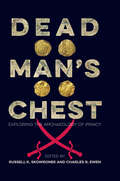
Dead Man's Chest: Exploring the Archaeology of Piracy
By Russell K. Skowronek, Charles R. Ewen. 2023
A global approach to better understanding piracy through archaeology Featuring discussions of newly discovered evidence from South America,…
England, New England, Haiti, the Virgin Islands, the Caribbean Sea, and the Indian Ocean, Dead Man’s Chest presents diverse approaches to better understanding piracy through archaeological investigations, landscape studies, material culture analyses, and documentary and cartographic evidence. The case studies in this volume include medieval and postmedieval piracy in the Bristol Channel, illicit trade in seventeenth-century fishing stations in Maine, and the guerrilla tactics of nineteenth-century privateers and coastal bandits off the Gulf of Mexico Coast. Contributors reveal the story of a Dutch privateer who saved a ship from a storm only to take control of it, partnerships between pirates and Indigenous inhabitants along the Miskito coast, and new findings on the Speaker—one of the first pirate ships to be archaeologically investigated—in Madagascar. As well as covering shipwrecks and other topics traditionally associated with piracy, several chapters look at pirate facilities on land and cultural interactions with nearby communities as reflected through archival documentation. As a whole, the volume highlights various ways to identify piracy and smuggling in the archaeological record, while encouraging readers to question what they think they know about pirates.Contributors: Dr. Charles R. Ewen | Russell K. Skowronek | Yann von Arnim | Martijn van den Bel | Patrick J. Boyle | John de Bry | Alexandre Coulaud | Jessie Cragg | Lynn B. Harris | Geraldo J. S. Hostin | Coy Jacob Idol | Kimberly P. Kenyon | Patrick Lizé | Laurent Pavlidis| Jason T. Raupp | Bradley Rodgers | Nathalie Sellier-Ségard | Jean Soulat | Katherine D. Thomas | Michael Thomin | Megan Rhodes Victor | Kenneth S. Wild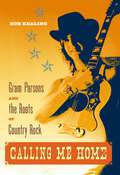
Calling Me Home: Gram Parsons and the Roots of Country Rock
By Bob Kealing. 2012
On September 19, 1973, Gram Parsons became yet another rock-and-roll casualty in an era of excess, a time when young…
men wore their dangerous habits like badges of honor. Unfortunately, his many musical accomplishments have been overshadowed by a morbid fascination with his drug overdose in the Joshua Tree desert at the age of twenty-six.Known as the father of country rock, Parsons played with the International Submarine Band, The Byrds, and the Flying Burrito Brothers. In the late 1960s and early 70s, he was a key confidante of Keith Richards. In 1972, he gave Emmylou Harris her first big break. When Tom Petty re-formed his Florida garage band Mudcrutch, he invoked the name of Gram Parsons as an inspiration. Musicians as diverse as Elvis Costello, Dwight Yoakam, Ryan Adams, Patty Griffin, and Steve Earle have also paid homage to alt-country's patron saint.In Calling Me Home, Kealing traces the entire arc of Parsons's career, emphasizing his Southern roots. Drawing on dozens of new interviews as well as rare letters and photographs provided by Parsons's family and legendary photojournalist Ted Polumbaum, Kealing has uncovered facts that even the most stalwart Parsons fans will find revealing.Travelling from Parsons' boyhood home in Waycross, Georgia, to the southern folk mecca of Coconut Grove, Florida, from the birthplace of outlaw country in Austin, Texas, to the Ryman auditorium in Nashville, Tennessee Kealing celebrates Parsons's timeless and transformative musical legacy.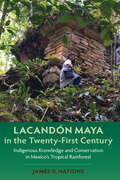
From the ancient traditions of the Lacandón Maya comes an Indigenous model for a sustainable future Having lived for…
centuries isolated within Mexico’s largest remaining tropical rainforest, the Indigenous Lacandón Maya now live at the nexus of two worlds—ancient and modern. While previous research has focused on documenting Lacandón oral traditions and religious practices in order to preserve them, this book tells the story of how Lacandón families have adapted to the contemporary world while applying their ancestral knowledge to create an ecologically sustainable future. Drawing on his 49 years of studying and learning from the Lacandón Maya, James Nations discusses how in the midst of external pressures such as technological changes, missionary influences, and logging ventures, Lacandón communities are building an economic system of agroforestry and ecotourism that produces income for their families while protecting biodiversity and cultural resources. Nations describes methods they use to plant and harvest without harming the forest, illustrating that despite drastic changes in lifestyle, respect for the environment continues to connect Lacandón families across generations. By helping with these tasks and inheriting the fables and myths that reinforce this worldview, Lacandón children continue to learn about the plants, animals, and spiritual deities that coexist in their land. Indigenous peoples such as the Lacandón Maya control one-third of the intact forest landscapes left on Earth, and Indigenous knowledge and practices are increasingly recognized as key elements in the survival of the planet’s biological diversity. The story of the Lacandón Maya serves as a model for Indigenous-controlled environmental conservation, and it will inform anyone interested in supporting sustainable Indigenous futures. A volume in the series Maya Studies, edited by Diane Z. Chase and Arlen F. Chase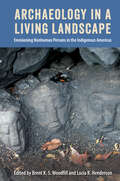
Archaeology in a Living Landscape: Envisioning Nonhuman Persons in the Indigenous Americas
By Brent K. S. Woodfill, Lucia R. Henderson. 2024
Recognizing and incorporating Indigenous knowledge systems in archaeological studies of the Americas This book explores the diverse range of…
other-than-human persons that inhabited and affected the landscape of the ancient Americas. These case studies acknowledge what is often dismissed by Western scholars: that Indigenous communities have long recognized degrees of personhood in mountains, volcanoes, caves, springs, rivers, rocks, plants, archaeological sites, trees, and animals and that this worldview should be taken seriously in archaeological investigations, community relations, and interpretations. In Archaeology in a Living Landscape, contributors examine the role of nonhuman agents in the ancient world, from land management and tenure to economics, politics, migration, pilgrimage, trade routes, conquest, ethics, and philosophy. Chapters describe Tlingit cosmology, lightning beings and magnetism in the Minnesota River Region, linguistic approaches to animacy in the United States Southeast, nonhuman persons in the ancient Maya economy, and Lacandon Maya ritual landscapes. They investigate the role of quarries in the building of Inka huacas (sacred spaces or objects), clay procurement and Andean apus (powerful mountains), Amazonian animism in polychrome ceramics, and the built and unbuilt landscape of the Mapuche. An epilogue by Dakota elder James Rock highlights how Western academic discourse often diverges from the viewpoints of Indigenous subjects. The contributors to this volume use language accessible to readers of diverse backgrounds. They focus on the centrality of nonhuman persons in the lives of Indigenous communities, working to move away from Western biases to embrace and integrate Indigenous belief frameworks in their studies. Archaeology in a Living Landscape highlights the value of Indigenous knowledge systems not just as archaeological evidence but as a body of theory. Contributors: Steve J. Langdon | Lisa J. Lucero | Alexei Vranich | James Rock | Eleanor Harrison-Buck | Lucia R. Henderson | Nicola Sharratt | Patrick Ryan Williams | Bill Sillar | Brent K.S. Woodfill | Jacob J. Sauer | Margaret Spivey-Faulkner | Sigrid Arnott | Dianne Desrosiers | Joshua Feinberg | David Maki | Carolyn Dean | Alice Balsanelli | Joel W. Palka | A.C. Roosevelt | Dennis Ogburn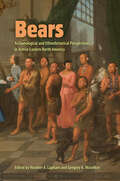
Bears: Archaeological and Ethnohistorical Perspectives in Native Eastern North America (Florida Museum of Natural History: Ripley P. Bullen Series)
By Gregory A. Waselkov, Heather A. Lapham. 2020
Highlighting the role of bears in Indigenous societies of North America Although scholars have long recognized the mythic status of bears…
in Indigenous North American societies of the past, this is the first volume to synthesize the vast amount of archaeological and historical research on the topic. Bears charts the special relationship between the American black bear and humans in eastern Native American cultures across thousands of years. These essays draw on zooarchaeological, ethnohistorical, and ethnographic evidence from nearly 300 archaeological sites from Quebec to the Gulf of Mexico. Contributors explore the ways bears have been treated as something akin to another kind of human—in the words of anthropologist Irving Hallowell, “other than human persons”—in Algonquian, Cherokee, Iroquois, Meskwaki, Creek, and many other Native cultures. Case studies focus on bear imagery in Native art and artifacts; the religious and economic significance of bears and bear products such as meat, fat, oil, and pelts; bears in Native worldviews, kinship systems, and cosmologies; and the use of bears as commodities in transatlantic trade. The case studies in Bears demonstrate that bears were not only a source of food, but were also religious, economic, and political icons within Indigenous cultures. This volume convincingly portrays the black bear as one of the most socially significant species in Native eastern North America. Contributors: Ralph Koziarski | Megan C. Kassabaum | Louis-Vincent Laperrière-Désorcy | J. Lynn Funkhouser | Heather A. Lapham | Hannah O’Regan | Christian St-Pierre | David Mather | DR Tanya M. Peres | Claire St-Germain | Barnet Pavao-Zuckerman | Heather Altman | Terrance Joseph Martin | Thomas Berres | J. Matthew Compton | Ashley Peles | Gregory A. Waselkov A volume in the Florida Museum of Natural History: Ripley P. Bullen Series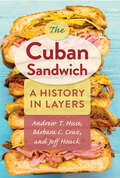
The Cuban Sandwich: A History in Layers
By Bárbara C. Cruz, Andrew T. Huse, Jeff Houck. 2022
A delicious, multilayered tale of a legendary sandwich Florida Book Awards, Gold Medal for CookingCreative Loafing Tampa Bay Best of the…
Bay Awards, “Best Approach to Pressing Matters” How did the Cuban sandwich become a symbol for a displaced people, win the hearts and bellies of America, and claim a spot on menus around the world? The odyssey of the Cubano begins with its hazy origins in the midnight cafés of Havana, from where it evolved into a dainty high-class hors d’oeuvre and eventually became a hearty street snack devoured by cigar factory workers. In The Cuban Sandwich, three devoted fans—Andrew Huse, Bárbara Cruz, and Jeff Houck—sort through improbable vintage recipes, sift gossip from Florida old-timers, and wade into the fearsome Tampa vs. Miami sandwich debate (is adding salami necessary or heresy?) to reveal the social history behind how this delicacy became a lunch-counter staple in the US and beyond.The authors also interview artisans who’ve perfected the high arts of creating and combining expertly baked Cuban bread, sweet ham, savory roast pork, perfectly melted Swiss cheese, and tangy, crunchy pickles. Tips and expert insight for making Cuban sandwiches at home will have readers savoring the history behind each perfect bite. Publication of this work is made possible by a Sustaining the Humanities through the American Rescue Plan grant from the National Endowment for the Humanities.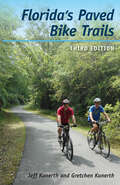
Florida's Paved Bike Trails
By Mr Jeff Kunerth, Ms Gretchen Kunerth. 2016
Since the release of the first edition of Florida’s Paved Bike Trails, the Sunshine State has added more than 200…
miles of multiuse asphalt and concrete paths. This updated edition of the best-selling guide to bicycling in Florida adds twenty-three new trails to an already impressive roster, offering cyclists—as well as rollerbladers, joggers, and walkers—vital details on over sixty trails across Florida. From where to find parking, water, restrooms, and benches, to how to reach nearby beaches, restaurants, museums, and other attractions, the authors expertly guide readers through Florida’s beautiful terrain.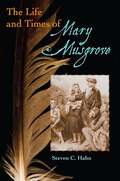
The Life and Times of Mary Musgrove
By Steven C Hahn. 2012
The story of Mary Musgrove (1700-1764), a Creek Indian-English woman struggling for success in colonial society, is an improbable one.As…
a literate Christian, entrepreneur, and wife of an Anglican clergyman, Mary was one of a small number of "mixed blood" Indians to achieve a position of prominence among English colonists. Born to a Creek mother and an English father, Mary's bicultural heritage prepared her for an eventful adulthood spent in the rough and tumble world of Colonial Georgia Indian affairs.Active in diplomacy, trade, and politics--affairs typically dominated by men--Mary worked as an interpreter between the Creek Indians and the colonists--although some argue that she did so for her own gains, altering translations to sway transactions in her favor. Widowed twice in the prime of her life, Mary and her successive husbands claimed vast tracts of land in Georgia (illegally, as British officials would have it) by virtue of her Indian heritage, thereby souring her relationship with the colony's governing officials and severely straining the colony's relationship with the Creek Indians.Using Mary's life as a narrative thread, Steven Hahn explores the connected histories of the Creek Indians and the colonies of South Carolina and Georgia. He demonstrates how the fluidity of race and gender relations on the southern frontier eventually succumbed to more rigid hierarchies that supported the region's emerging plantation system.
Paving Paradise: Florida's Vanishing Wetlands and the Failure of No Net Loss (Florida History and Culture)
By Craig Pittman, Matthew Waite. 2009
Florida possesses more wetlands than any other state except Alaska, yet since 1990 more than 84,000 acres have been lost…
to development despite presidential pledges to protect them.How and why the state's wetlands are continuing to disappear is the subject of Paving Paradise. Journalists Craig Pittman and Matthew Waite spent nearly four years investigating the political expedience, corruption, and negligence on the part of federal and state agencies that led to a failure to enforce regulations on developers. They traveled throughout the state, interviewed hundreds of people, dug through thousands of documents, and analyzed satellite imagery to identify former wetlands that were now houses, stores, and parking lots.Exposing the unseen environmental consequences of rampant sprawl, Pittman and Waite explain how wetland protection creates the illusion of environmental protection while doing little to stem the tide of destruction.